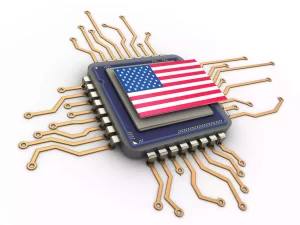Introduction
In an era where connectivity and speed dictate the pace of technological advancements, the introduction of the world’s first high-speed 6G device marks a significant milestone.
Unveiled by a forward-thinking Japanese consortium, this prototype promises to redefine our digital landscape with unprecedented data transfer rates.
The innovative 6G device claims an impressive data transmission rate of 100 gigabits per second (Gbps), which is 20 times faster than current 5G technology. Operating on the 100 gigahertz (GHz) frequency for indoor use and the 300 GHz band for outdoor applications, this prototype highlights the potential for unparalleled connectivity speeds.

Here, we delve into the details of this groundbreaking innovation and its potential to revolutionize various facets of life and industry.
The dawn of 6G represents the next evolution in wireless communication technology. It aims to surpass the capabilities of 5G networks. 6G promises even faster data speeds, lower latency, and greater capacity. It will enable revolutionary applications such as holographic communications, real-time remote surgery, and seamless virtual reality experiences. Research and development efforts are already underway worldwide to lay the groundwork for 6G technology. It is expected to revolutionize various industries and drive innovation in connectivity, paving the way for a more interconnected and digitally advanced world.
Follow us on Linkedin for everything around Semiconductors & AI
How did Japanese firms make this 6G device?
Japanese firms achieved the development of the world’s first 6G device through a collaborative effort involving DOCOMO, NTT Corporation, NEC Corporation, and Fujitsu. Each company contributed specific expertise to different aspects of research and development:
DOCOMO: Analyzed wireless system configurations for 100 GHz telecommunications applications. They also engineered wireless transmission equipment capable of delivering data at rates of up to 100 Gbps across a 100-meter range.
NTT Corporation: Developed high-end 300 GHz devices capable of channeling 100 Gbps per channel over a 100-meter distance, showcasing their expertise as Japan’s premier telecom provider.
NEC Corporation: Produced a multi-element active phased array antenna (APAA) featuring over 100 antenna elements, demonstrating their proficiency in advanced antenna technology.
Fujitsu: Created semiconductors capable of amplifying signals in the 100 GHz and 300 GHz bands with high output and efficiency, leveraging their expertise in electronics manufacturing.
Combining these advancements, the collaborative effort resulted in the world’s first 6G device. The groundbreaking device enables users to stream five HD films every second. This represents a significant leap in wireless communication capabilities. It showcases remarkable capacity and speed. This achievement marks a major milestone in technological advancement.
It sets the stage for groundbreaking applications and experiences. The possibilities for innovation are vast.
It signifies progress towards a more connected future. Revolutionary technologies will emerge as a result. The impact on various industries will be profound.
Breaking Speed Barriers
The new 6G device offers a data transmission rate of 100 gigabits per second (Gbps). This is a significant improvement from the current 5G, which peaks at around 5 Gbps.
The 6G device achieves this 20-fold increase by using the 100 gigahertz (GHz) frequency band indoors.
For outdoor use, it leverages the 300 GHz band.Such high frequencies enable massive data throughput, crucial for next-generation applications and services.
Read More: 7 Reasons Why AI is the Future of Work – techovedas
Challenges of Higher Frequencies
Despite the allure of such high data rates, operating at higher frequencies presents significant technical challenges.
The 100-300 GHz bands have shorter wavelengths. This limits signal propagation distances. It also reduces penetration through walls and buildings.
Innovative engineering solutions are needed. Advanced antenna designs can help. Beamforming techniques will be crucial.
A denser network of smaller cells is likely necessary. These measures will ensure consistent and reliable coverage.
Read More: GPT-4o: 12 Mind-Blowing Use Cases That Change How We Interact with AI – techovedas
Real-World Implications
The transition from 4G to 5G enhanced data capacity and speed. This upgrade significantly benefited activities like video streaming and mobile browsing. It also facilitated initial steps into integrating IoT (Internet of Things) devices into networks.
However, 6G technology is poised to unlock a new era of possibilities that extend well beyond personal convenience:
Real-Time Holographic Communication: Imagine conducting a video call where participants appear as lifelike holograms, providing a truly immersive communication experience.
Immersive Virtual and Mixed Reality: 6G could enable seamless, high-quality virtual and augmented reality experiences, transforming fields such as gaming, education, and remote collaboration.
Advanced Internet of Things (IoT): With 6G, a vast number of IoT devices can communicate in real-time, facilitating smarter homes, cities, and industries.
Read More:unraveling-the-scale-of-data-a-closer-look-at-googles-brain-imaging-study/
Beyond Personal Convenience
The potential impact of 6G is vast, promising to revolutionize entire industries and create new opportunities for innovation:
Healthcare: Real-time data transmission from medical devices could enable remote surgeries, instantaneous diagnostics, and continuous monitoring of patients, dramatically improving healthcare delivery and outcomes.
Transportation: Autonomous vehicles could benefit from 6G by communicating with each other and with infrastructure instantaneously. This will lead to safer and more efficient transportation systems.
Artificial Intelligence: The immense data rates and low latency of 6G could empower AI applications to process and analyze data faster and more accurately. This will drive advancements in various fields from scientific research to financial modeling.
Read More: Japan Pumps $740 Million into AI Race, Teams Up With NVIDIA – techovedas
The Path Forward
While the prototype unveiling marks a significant step forward, widespread adoption of 6G technology remains a future goal. The journey to mainstream 6G will involve several key steps:
Development of 6G-Compatible Devices: The industry will need to design and manufacture a new generation of devices equipped with 6G antennas and supporting hardware.
Infrastructure Upgrades: Building the necessary infrastructure to support 6G, including a denser network of small cells and advanced signal processing technologies, will be crucial.
Overcoming Environmental Challenges: Addressing issues such as signal interference from physical obstacles and environmental factors like rain will be essential for reliable 6G connectivity.
Regulatory and Standardization Efforts: Establishing global standards and regulations for 6G technology will be vital to ensure compatibility and interoperability across different regions and devices.
Read More: 40,000x Data Retention Boost: NEO Reveals World’s First 3D NAND-Like DRAM – techovedas
Comparison of 5G and 6G
| Feature | 5G | 6G |
|---|---|---|
| Data Speed | Up to 20 Gbps | Expected to exceed 100 Gbps |
| Latency | Around 1 millisecond (ms) | Targeted latency below 0.1 ms |
| Frequency Bands | Primarily sub-6 GHz and mmWave bands | Potentially extends into terahertz frequencies |
| Bandwidth | Up to 1 GHz | Broader bandwidth allocation for increased capacity |
| Connection Density | Supports up to 1 million devices per square kilometer | Aims to support significantly higher device densities |
| Energy Efficiency | Improved energy efficiency compared to 4G | Focuses on further enhancements in energy efficiency |
| Coverage Range | Varies, but generally broader than 4G | Expected to improve coverage in rural and remote areas |
| Technological Advances | Massive MIMO, Beamforming, Network Slicing | Advanced antenna technologies, AI-driven networks |
| Applications | Enhanced mobile broadband, IoT, AR/VR | Holographic communication, Real-time telepresence |
| Timeline | Deployment ongoing, with global adoption increasing | In research and development stage, expected in 2030s |
Conclusion
Japan has unveiled the world’s first high-speed 6G device. This marks a new chapter in wireless communication.
There are challenges ahead. However, the benefits of 6G technology are immense. It promises to transform our lives, work, and interactions.
Research and development are ongoing. A hyper-connected future driven by 6G is nearing reality. Innovations once seen in science fiction are now possible.








